
Top 10 Ayurvedic Herbs
Centred on balancing the mind, body, and spirit, Ayurvedic herbs play a crucial role in the traditional Indian holistic system of Ayurveda. To find out which herbs you should try first, keep reading.
Plants have been used for millennia to address various wellness needs, but few are as revered as Ayurvedic herbs, a subset of plants linked to the traditional system of Ayurveda. The principle of these herbs is simple—preventing illness through balancing the mind, body, and spirit. Still, what is it about this centuries-old healing system that remains popular today?
What are Ayurvedic herbs?

To understand the role of Ayurvedic herbs, first we need to understand India's traditional healing system—Ayurveda. In practice for over three millennia, Ayurveda focuses on using natural therapies, such as herbs, meditation, and yoga, to prevent illness rather than address health conditions directly.
In today's modern society, it's easy to see why a proactive approach to well-being is so popular. With processed foods and sedentary lifestyles being common, the inclusion of simple herbs to help balance the mind, body, and spirit could be a small lifestyle change that makes a significant difference in how you think and feel.
The 10 best Ayurvedic herbs
If the idea of Ayurveda sounds appealing, then you're in luck. Below, you'll find a list of the ten best Ayurvedic herbs to get started with.
1. Curcuma
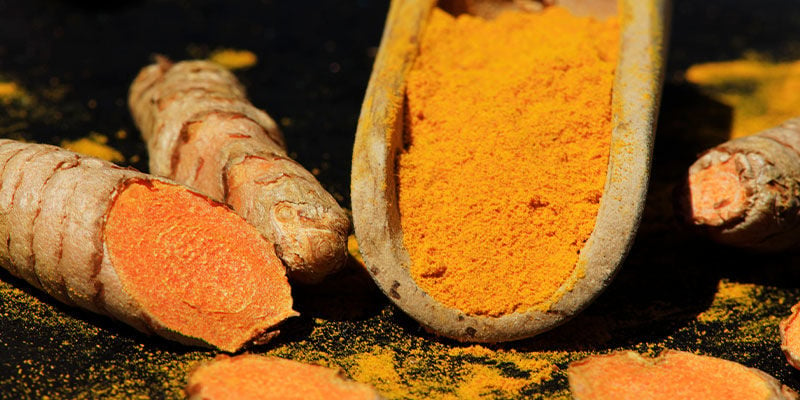
Curcuma longa is a flowering plant that belongs to the ginger family. However, what makes this plant truly unique is the substance that comes from its roots—the globally used herb turmeric. Turmeric's main ingredient is curcumin, a bioactive substance believed to influence mood, joints, and inflammation.
Another distinctive characteristic of turmeric is its bright orange/yellow appearance and potent, pepper-like flavour. While turmeric is widely available in supermarkets, wellness enthusiasts should focus on pure turmeric powder locally sourced from India.
2. Moringa
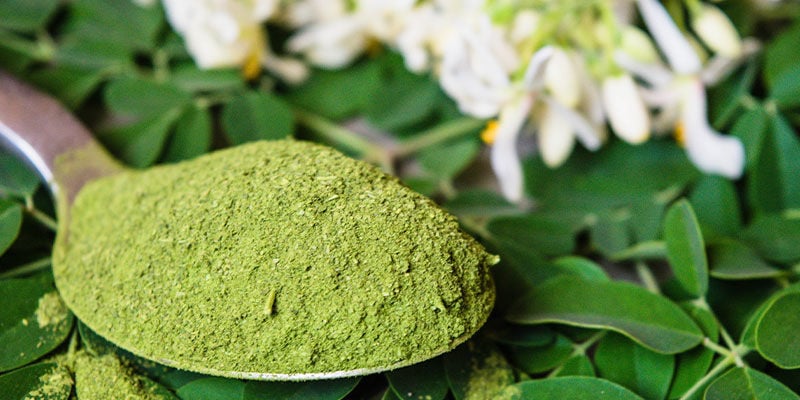
Packed with vitamins, amino acids, and antioxidants, Moringa oleifera is a tree native to the Indian subcontinent. While the entire tree is harvested for its beneficial compounds, the leaves are believed to contain the greatest abundance of vitamins and minerals, including vitamins A, C, and E.
One of the most popular ways to consume moringa is as a fine powder steeped in hot water. Some people even add the powder to smoothies and various dishes as a "superfood seasoning".
3. Ginger
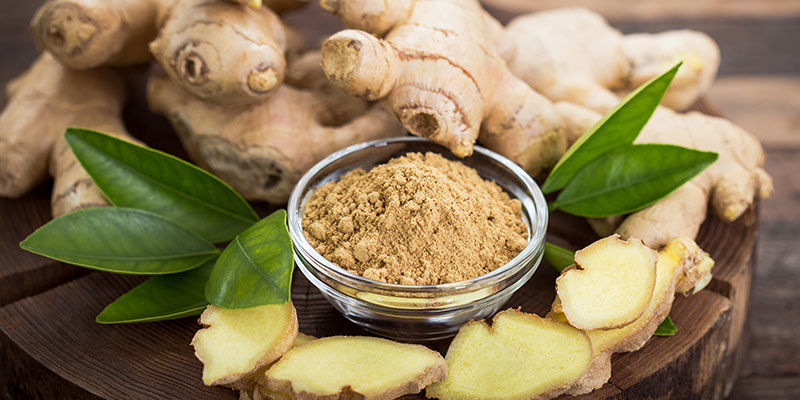
Known for its highly distinctive flavour, ginger (specifically the root of the ginger plant) is another common ingredient you may not realise possesses a wealth of wellness benefits. Ginger owes this influence to several potent molecules, including gingerols, zingerone, and beta-carotene.
Together, these bioactive compounds (alongside vitamins and minerals) support ginger's role as one of the most commonly used Ayurvedic herbs. In fact, it's commonplace for people to take ginger whenever they have an upset stomach.
4. Schisandra
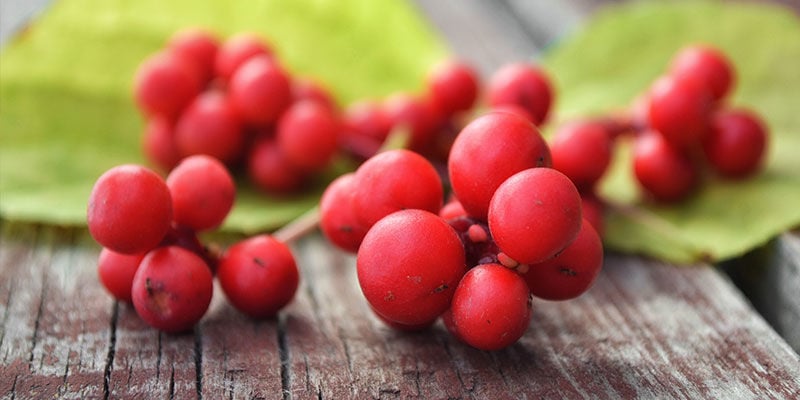
This time, it's not the roots or the leaves we're interested in, but the berries. Schisandra's deep red fruits contain lignans, which, when consumed, are believed to act as adaptogens, bolstering the body's resilience to physical and mental stressors.
However, if you want to capitalise on the vine's proposed benefits, using a concentrated extract, rather than eating raw berries, is best. Most people prefer using dried powder, capsules, and elixirs to bypass the fruit’s naturally sweet, salty, and bitter taste.
5. Triphala
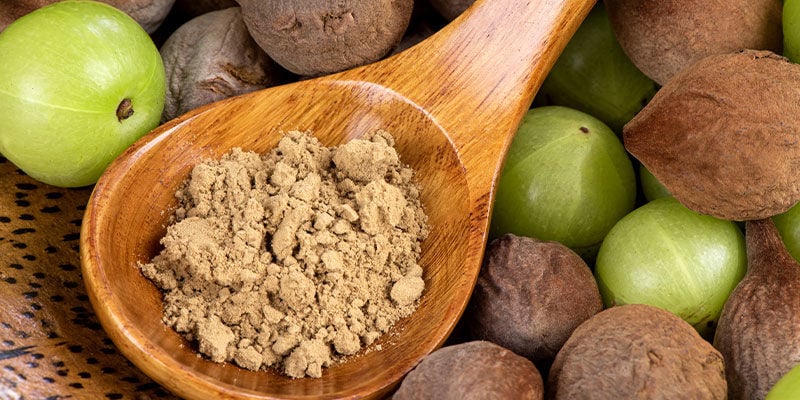
A staple of Ayurvedic practice, triphala is rich in vitamin C and amino acids. However, what sets it apart from other Ayurvedic herbs is its components. Triphala extract is actually made using the fruits of three different plants—amla (Emblica officinalis), bibhitaki (Terminalia bellirica), and haritaki (Terminalia chebula).
Collectively, these plants contain the previously mentioned vitamin C alongside polyphenols, tannins, and saponins. These beneficial plant compounds may support areas such as brain health and digestion.
6. Amla
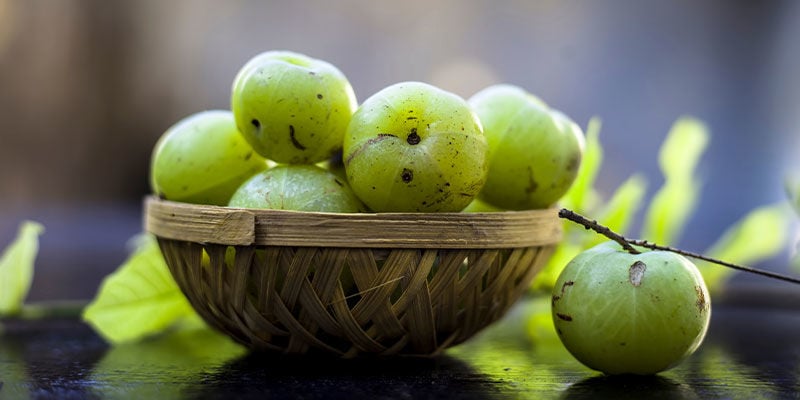
You may recognise the name of this next plant, as it forms part of the triphala extract mentioned above. Amla, also known as Indian gooseberry, is a flowering tree with small, bright yellow-green berries. Interestingly, the earliest records of alma as a holistic herb date back almost a thousand years.
However, what these berries lack in size, they make up for in wellness benefits, as a 100-gram serving contains the same amount of vitamin C as twenty oranges. Just a handful is one hell of a boost to your immune system!
7. Rehmannia
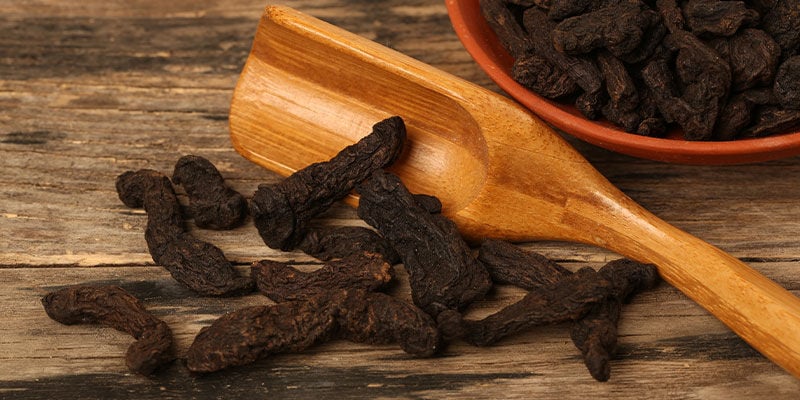
With over 2,000 years of use, rehmannia (Chinese foxglove) is a traditional preparation believed to help balance the yin. The concept of balancing yin and yang goes hand in hand with the principles of Ayurveda, so it's no surprise the herb plays a central role in both Chinese and Indian traditional holistic systems.
Unfortunately, we don't know much about the chemical structure of rehmannia due to a lack of research. Still, anecdotal evidence suggests a potential influence on the immune and nervous systems.
8. Sage
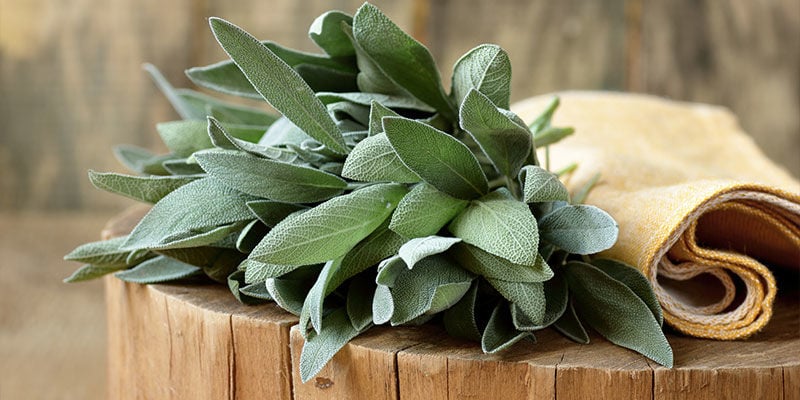
A herb that needs little introduction, sage is present in cupboards and pantries worldwide. Still, there's more to this flavourful herb than simply acting as a garnish. Sage actually contains several beneficial nutrients and bioactive compounds, including vitamin K, B6, and iron.
Of particular note is the herb's abundance of vitamin K, with just one teaspoon accounting for 10% of your recommended daily allowance. Sufficient vitamin K intake is essential for making proteins involved in blood clotting and bone density.
9. Harad
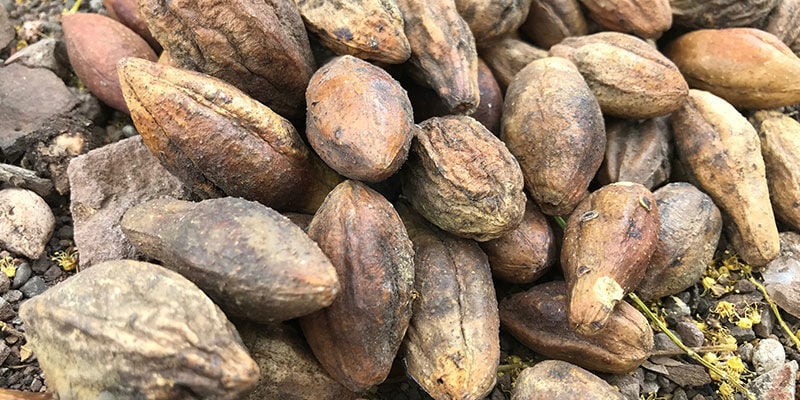
With many different regional names, harad/haritaki refers to fruit from the Terminalia chebula tree (Combretaceae family). Once dried and turned into a powder, people add the fruit to tea, smoothies, yoghurt, and cereal to enhance general health. In fact, the meaning of the word haritaki is to remove the disease (harati) and make the body shine (takati).
Harad also forms part of the triphala extract highlighted earlier, and is commonly touted for its influence on digestion and mental well-being. The deciduous tree grows natively in India and has been part of the Ayurvedic system for centuries.
10. Boswellia
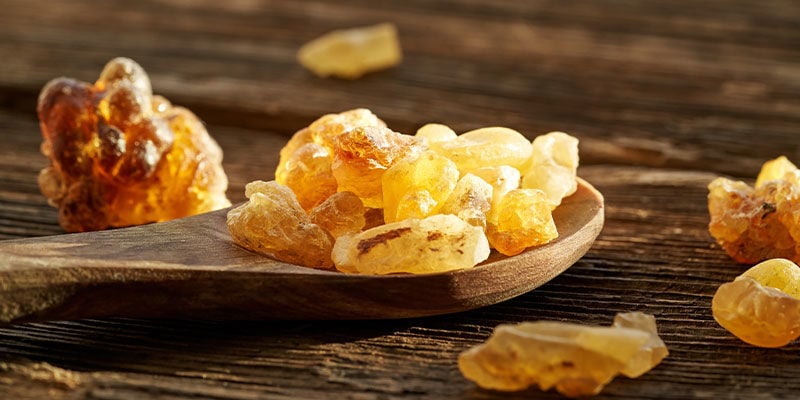
Extracted from the Boswellia serrata tree, boswellia, or Indian frankincense, is a herbal extract used to support the body's inflammatory process. Both the bark and sap are harvested to create oral preparations and topical oils.
In fact, the versatility of boswellia is one of its strongest attributes as, no matter your wellness needs, there are numerous ways to incorporate the herb into your daily routine. Just ensure you opt for high-quality products to limit the risk of potential side effects.
How to choose the best Ayurvedic herb for you
Ayurveda is built on the principle of balance and maintaining the connection between your mind, body, and spirit. Ayurvedic herbs are an extension of that principle, as their sole purpose is to work alongside your body and support your wellness needs.
As such, it's less about picking the best herb, and more about picking the right herb for your needs. Our top ten list showcases some of the most influential Ayurvedic herbs, and serves as an excellent starting point for your journey into the world of holistic well-being. So, what are you waiting for? Try any of the suggestions above, and see how natural herbs and extracts can bolster your lust for life.





 United States
United States












